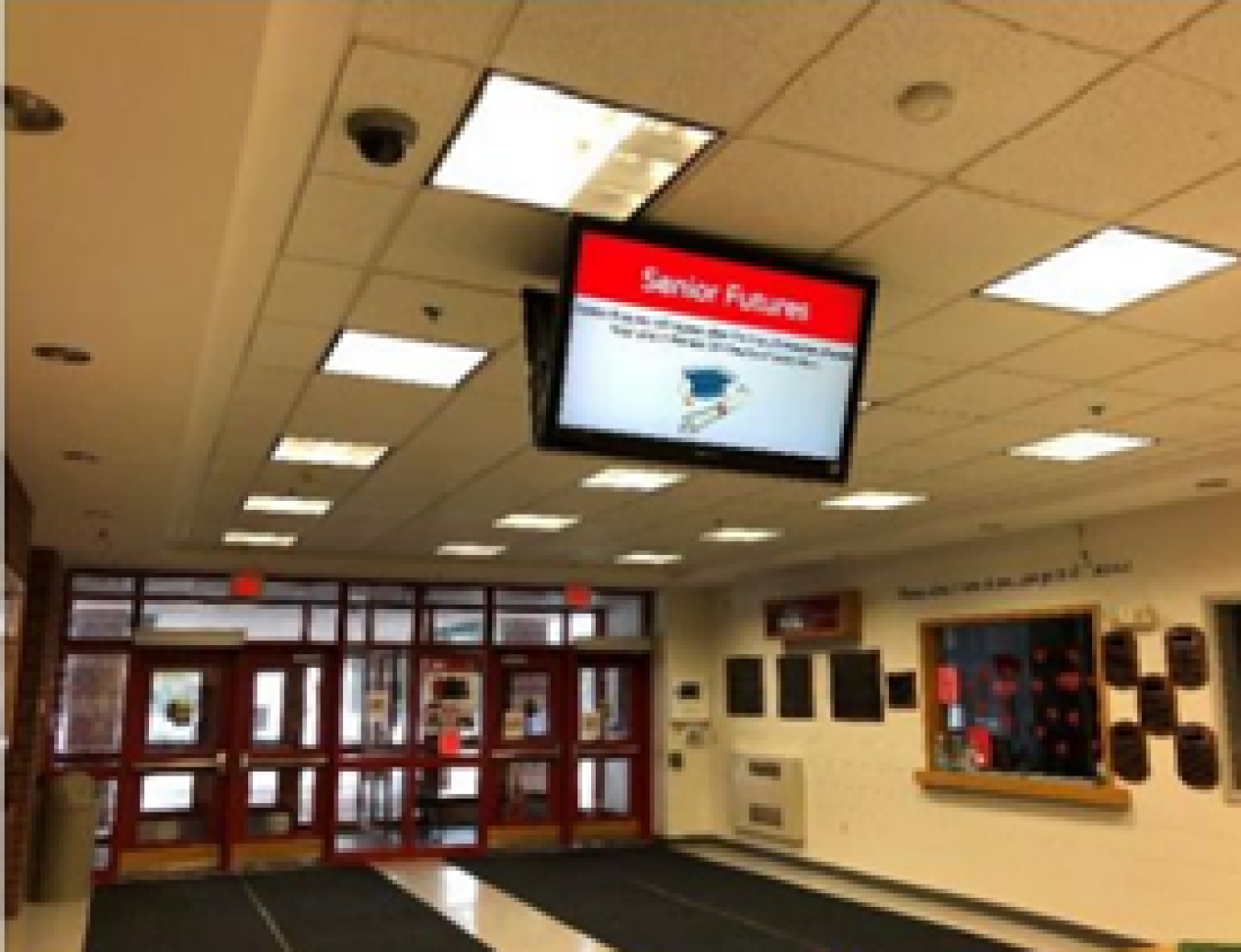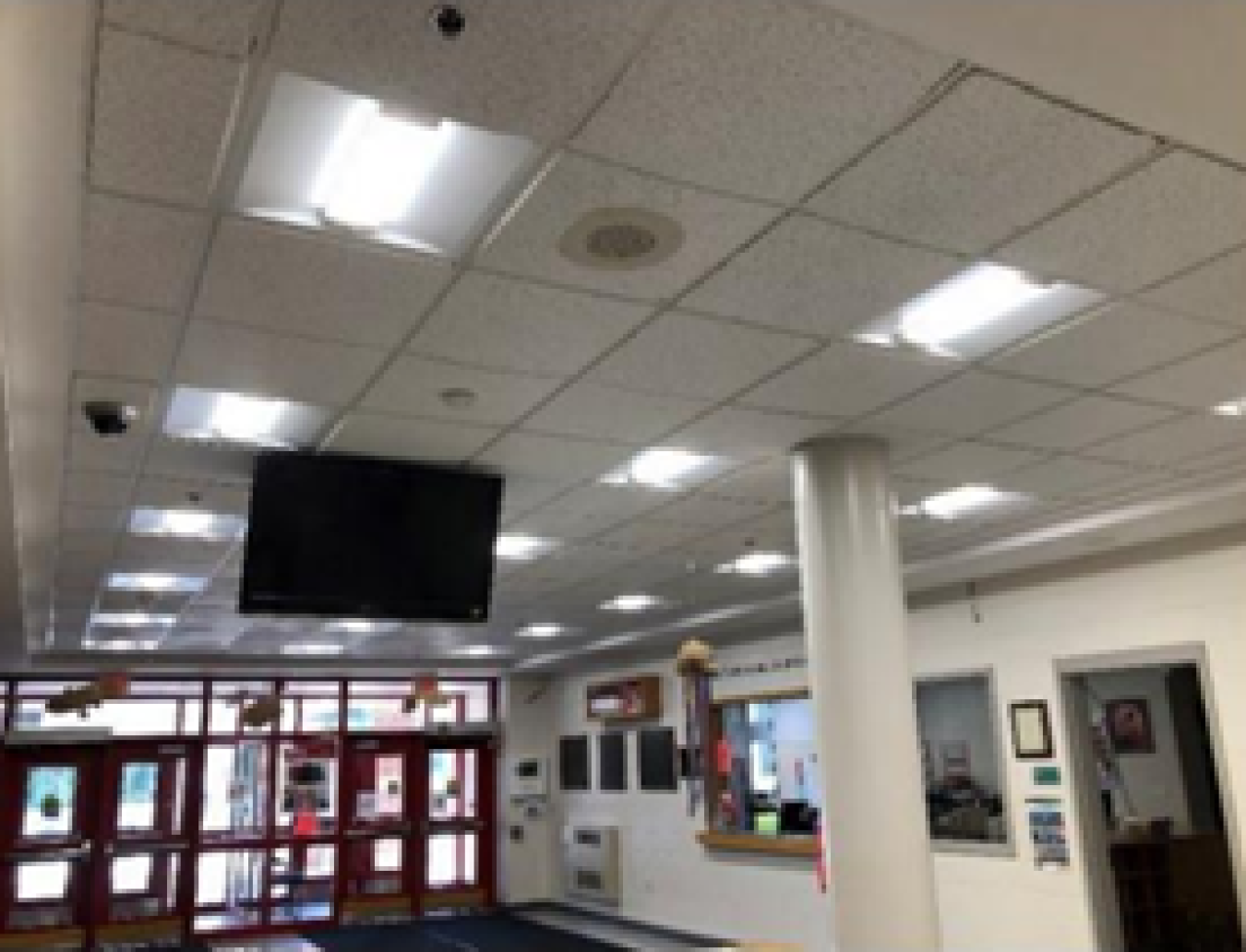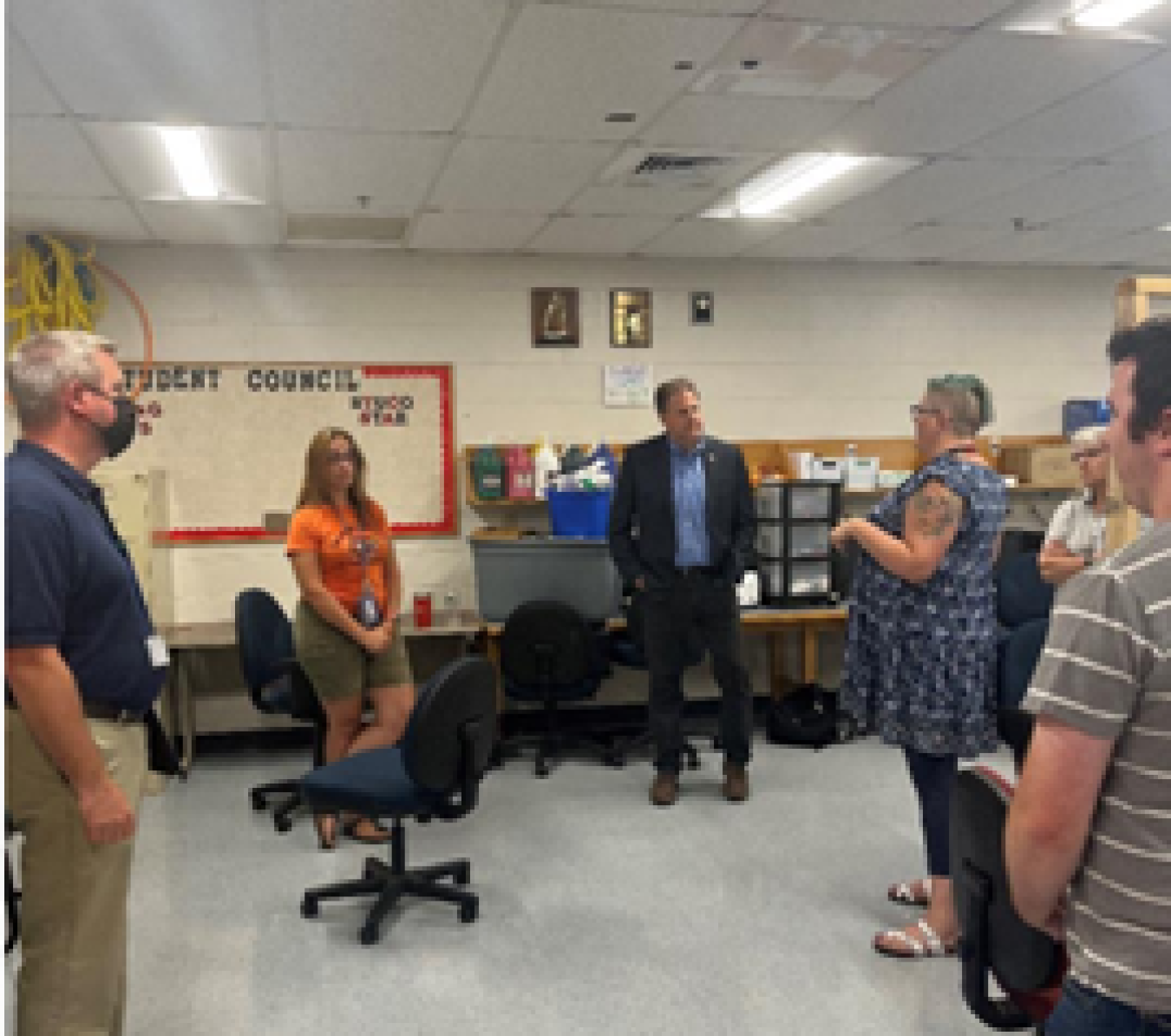Using funds from the U.S. Department of Energy State Energy Program (SEP), New Hampshire is improving lighting efficiency in public schools.
Many Benefits From One Program
The New Hampshire Department of Energy (NHDOE) is making transformative investments in energy efficiency and safety in schools through its School Energy Efficiency Development (SEED) Grant Program. Unlike heating or cooling, lighting is used in buildings year-round and accounts for 17% of all electricity consumed in U.S. commercial buildings. Investments in lighting efficiency thus have the potential to drastically cut buildings’ energy use and costs, saving money and reducing carbon emissions.
Energy efficiency projects funded through the SEED Grant Program have the dual benefit of lowering a school’s energy costs to provide a direct financial benefit for school budgets and local property taxpayers, as well as providing a safer, healthier learning environment for students and staff. The U.S. Department of Energy’s (DOE) State Energy Program provided funding to support this program.
LED Lights Create a Bright Future
Investments in high-efficiency light-emitting diode (LED) lights have proven to be simple, yet impactful, choices as they can generate savings of hundreds to thousands of dollars per year on utility bills. LED lights use 90% less energy and last up to 15 times longer than incandescent bulbs, resulting in significant financial savings on operations and maintenance.
DOE estimates that widespread use of LEDs by 2027 could reduce our nation’s electricity use by an amount equal to the annual electrical output of 44 large electric power plants, and lead to total savings of more than $30 billion. LED lights also produce a higher quality of light, making indoor environments more comfortable for occupants.
The SEED Program in Action


The pictures above show the lobby lighting before (top) and after (bottom) the lighting upgrades in Campbell High School in Litchfield, NH.
NHDOE’s SEED Grant Program is a competitive matching grant program aimed at improving the energy efficiency of New Hampshire’s public schools, including through investments in energy-efficient lighting. In November 2021, NHDOE awarded $80,000 to Campbell High School in Litchfield, New Hampshire to upgrade the school’s outdated and inefficient interior lighting, where fluorescent and incandescent bulbs with manual controls and aging occupancy sensors required constant maintenance by school staff.
SEED Grant Program funding helped the school successfully replace and retrofit more than 1,200 lighting fixtures with LEDs, along with wireless sensors that provide dimming capabilities, occupancy sensors, and daylight harvesting. Within the first year of operation, these improvements will save the school an estimated 170,000 kWh of electricity and more than $30,000 in utility bills.
Successes and Challenges
Project contractors Energy Management Consultants, Inc. (EMC) and Phillips Lighting hosted training sessions for school personnel to learn how to operate and program the new lighting fixtures, which receive signals from wireless devices that allow the user to pre-program light levels and change settings. EMC also worked with the school to determine the most energy-efficient fixture settings, including default light level settings, maximum light levels, and occupancy sensor timing. This important training helps the school better regulate its lighting and energy usage.
Campbell High School successfully overcame supply chain challenges to complete the project on schedule. In 2019, the last full school year before the COVID-19 pandemic, lighting costs made up 31% of Campbell High School’s electric bill. Savings from this project can be reinvested into other educational initiatives or into advancing Litchfield School District’s renewable energy goals, such as installing solar panels.
A Visit From the Governor

New Hampshire Governor Chris Sununu talks with Campbell High School staff about classroom lighting improvements.
NHDOE marked the accomplishment of the SEED Grant Program with a tour of Campbell High School in August 2022 alongside New Hampshire Governor Chris Sununu, as well as school leadership, students, and staff. "Great to see Litchfield Campbell High School use the [NHDOE] funds to improve lighting to save electricity, cut costs, and produce a better environment for students!" said Governor Chris Sununu via Twitter.
Dr. Michael Jette, Superintendent of Litchfield School District, touted the opportunity afforded by SEED Grant funding to update lighting and fixtures throughout the 20-year-old high school facility.
The new lighting is better for learning and will save valuable taxpayer funds well into the future. Everyone benefits when we leverage our federal, state, and local partners to help a small school district make positive strides.
Moving Toward a Clean Energy Future
NHDOE’s SEED Grant Program highlights the numerous benefits of energy efficiency investments and shows how states can lead the way with high-impact projects in public buildings. Through SEP and other community-focused programs, DOE looks forward to supporting the continued success of this program and other NHDOE efforts to deliver clean, affordable, and secure energy to New Hampshire residents.
U.S. DOE’s State Energy Program (SEP) provides funding and technical assistance to all 50 states, five U.S. territories, and the District of Columbia to enhance energy security, advance state-led energy initiatives, and increase energy affordability. SEP emphasizes the state’s role as the decision maker and administrator for program activities within the state that are tailored to their unique resources, delivery capacity, and energy goals.
